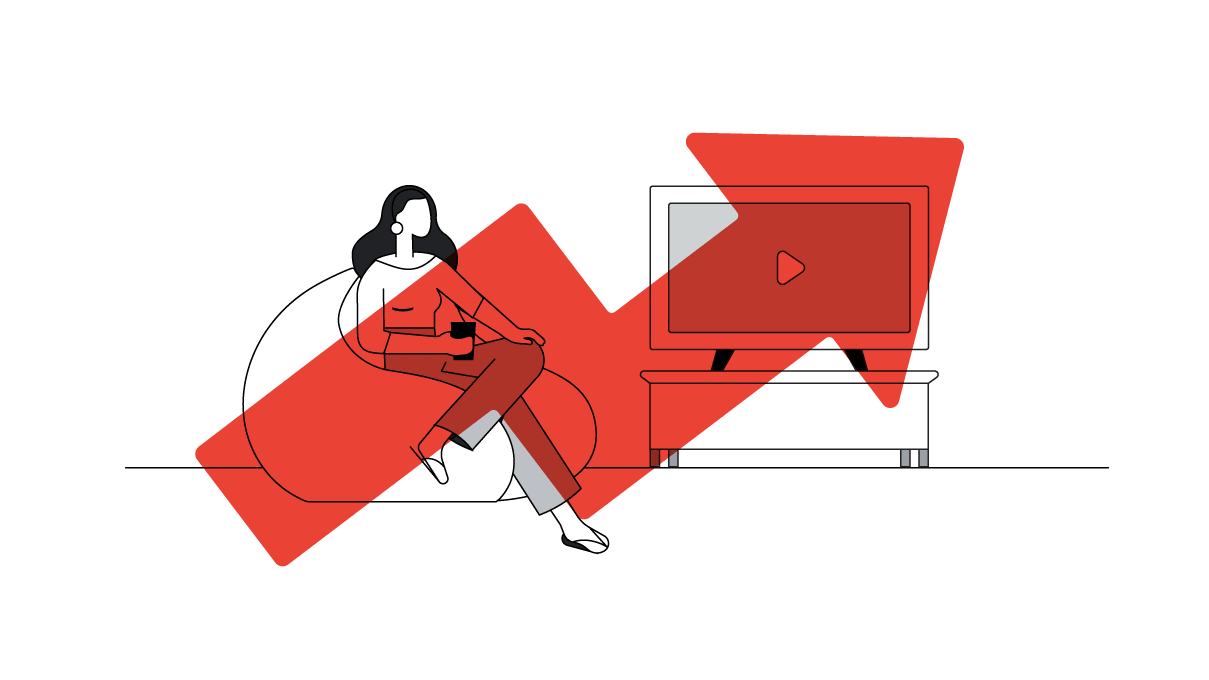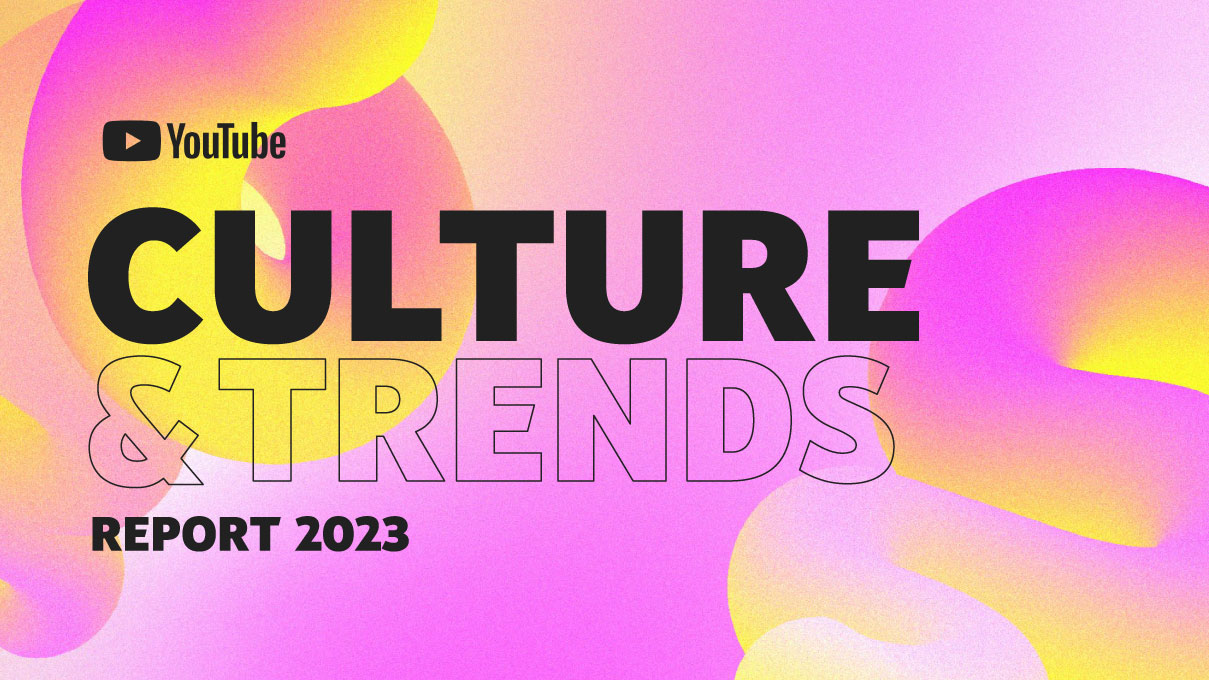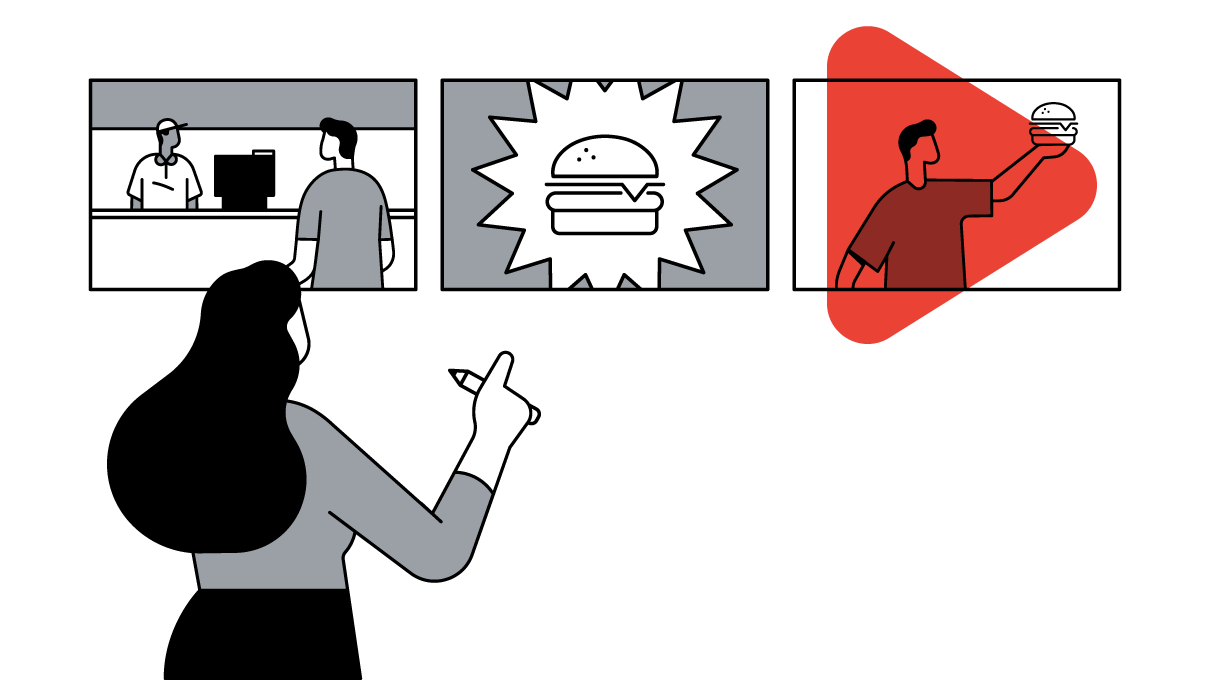Determine what your channel stands for. Produce videos in a consistent voice. Map out a release strategy. Get the timing right and give people a reason to keep coming back.
Develop a Programming Strategy
Programming refers to a schedule for releasing videos and shows as part of a daily, weekly or season-long timeline. It includes both pre-production and production activities: what type of content to produce and how to publish and share it.
Leveraging three different types of videos can help you build out a balanced programming strategy. This is the “Hero, Hub, Help” framework.
- Hero:
This is the content you want to push to a big, broad audience. Most likely, you’ll only have a few hero moments per year—for example, major product launches or seasonal tent poles.
- Hub:
Episodic or multi-part series designed to give a fresh perspective on your audience’s passions and interests. This is often staggered throughout the year.
- Help:
Answer the questions your consumers are asking to create programming that is always relevant throughout the year. Consider making product tutorials, How-to lessons or customer service videos.
Takeaways
- Create Hero content to take advantage of tent pole events and grow your audience in a big way.
- Create Hub content to give people a reason to visit your channel on a regular basis.
- Create Help content that gives clear answers to frequent YouTube search queries.
Programming Hero Content
Hero moments are characterised by intense bursts of activity and investment—when brands make important choices to be seen by vast audiences, usually across a short period of time. YouTube can be of unique help thanks to the reach of its high-impact formats like the Masthead and in-stream ads.
Here are some things to keep in mind while creating hero content:
- Identify important events that are relevant to your audience.
- Use Google Trends. Explore the tool to gauge how much early and sustained interest there is around an event.
- Develop a programming calendar covering all the videos you are going to create or curate for the event.
- Get ahead of the buzz. Release ancillary videos around your hero content several days before the event. The pre-buzz (or audience interest) leading up to an event is just as important as the actual event.
- Consider collaborating with YouTube creators to amplify your message.
- Ask yourself: Would people bother to share this on social media? Would this make a good newspaper headline? Can you imagine your audience paying for this content?
- Ask for your audience's participation in the event. Can they design it? Star in it? Vote for it? Turn your audience into advocates who will promote ahead of the launch.
- Use offline advertising, social media posts and influencer support. Planned promotional strategies that build over time work better than one-off flashes of activity.
Bite, Snack, Meal
YouTube is a creative canvas—that’s what makes it the perfect platform for innovative advertising. With a multitude of ways to tell stories, there’s no reason to lean heavily on traditional formats. Here’s your opportunity to push back against :30 storyboards with typical arcs (i.e. slow build, climax, and brand reveal at :25).
People come to YouTube to fulfill all sorts of needs throughout the day, from quick How-to videos to entertaining Carpool Karaoke. Their willingness to engage with your videos depends on a variety of factors you can’t control. But you CAN control the form your videos take, and the storytelling methods you employ. Carefully calibrating these elements can help you meet viewers at their moments of need.
Our recommended approach—“Bite, Snack, Meal”—helps you rethink your story arc to orchestrate content across these moments and drive maximum reach with your audience.
- Bite:
Short format, quick-hit videos to tease or echo a key message. 0-0:10.
- Snack:
Mid-length format videos to convey a key message. 0:10-0:30.
- Meal:
Longer-form videos that aren’t possible on TV with the ability to build brand equity. 0:30+.
Takeaways
- Use Google Trends to gauge interest in a cultural event, release videos to tap into pre-buzz and use TrueView to promote your Hero video.
- Use the “Bite, Snack, Meal” approach to orchestrate content across moments that matter to your viewers and drive maximum reach with your audience. Bite is short-format, Snack is mid-length and Meal is longer-form content.
Programming Hub Content
Consistent formats are the key to channel sustainability. Think about successful TV franchises—the nightly news, Friends, The Price is Right—and apply what you know about their success to making ads for YouTube. This is the the first step in creating your Hub content—regularly scheduled videos that give viewers a reason to subscribe to your channel.
Here are some suggestions to get you started:
- Create an editorial voice with a strong, distinctive style.
- Consider casting a single identifiable personality to appear across all your content.
- Maintain a consistent visual language.
- Communicate a regular and clear release schedule in channel art, video descriptions and/or calls to action in your videos. See Organic Optimisation for more.
- Develop an active promotion strategy that includes social media, cross-promotions and incentives for subscribers to share your videos.
Consistency
Consistency is crucial to success on the site. But consistency can refer to different aspects of production. Take a look at how these videos use consistency of format, schedule, and elements to tie their content together in satisfying ways. Note that Hub content doesn’t always have to be fully polished, and can be created with production values that range from scant to robust.
- Consistent Schedule:
Upload a video to your channel on a specific day.
- Consistent Format:
Create a recurring series with videos that can be repeated again and again.
- Consistent Elements:
Repeat small aspects of a video the same way every time, such as intros and outros, or revisit certain segments.
Why Be Consistent?
- Compel your audience to return again and again to what they like and are familiar with.
- Increase fan loyalty.
- Make your audience comfortable.
- Help your audience develop a sense of expectation.
Best Practices to Remain Consistent
- Develop ideas that can be expressed over multiple videos.
- Create a structured format that will prevent you from having to reinvent every video.
- Make sure your videos have a clear point of view that accurately reflects your messaging.
- Remember, consistency requires a sustainable approach—considering costs, means of production, and creative resources.
Sustainability
Designing a consistent format for your videos is a great way to build a loyal audience, but it only works if you can actually sustain that format. Take a look at all the elements of the production, from the location and actors to the overall budget, and make sure you’ll be able to maintain it over time. Here are some tips for being sustainable:
- Plan your creative concept carefully. Does it have longevity?
- Implement recurring formats and predictable programming—organise your videos and channel activity into a daily, weekly or season-long schedule.
- Make sure you have the in-house or agency resources to support your creative vision for the long term.
Takeaways
- Use consistency of format, schedule and production elements to give your Hub content a cohesive look and feel.
- Sustaining video consistency over time takes resources. Make sure you know what you need—and have access to it—before you start creating.
- Cultivate a sense of expectation in your audience to keep them coming back for more.
Programming Help Content
Help content refers to your channel’s always-on videos. Straightforward How-to guides are a natural fit for this kind of content, but that doesn’t mean you always have to be providing actionable advice. Your goal should be to make videos that meet users’ needs.
Here’s how to get started:
- Use Google Trends or YouTube Trends to understand what viewers are searching for when they come to YouTube. Find the most frequent searches (aka “queries”).
- Create a Help video that clearly and simply addresses a specific high-volume search query.
- Establish why your brand should be the one to answer the query, but keep the sales pitch to a minimum.
- Create evergreen content. How-to and instructional videos will be searched for over time.
Discoverability
YouTube is the second-most-used search engine in the world, behind Google. Every day, millions of visitors search for videos about all sorts of subjects. While they may not be looking for your video—or even be aware of your content—you can take steps to ensure that YouTube surfaces it for them to discover.
What Makes Content Discoverable?
- Videos on highly-searched topics will surface in search results. Use Google Trends to find out what kinds of videos people are looking for.
- Some search terms are popular for years. Videos that address these queries will have a longer shelf life on YouTube.
Best Practices for Discoverability
- Make videos around trending events. Your content will surface with the sudden rush of traffic around that topic.
- Fully optimise your metadata including video titles, tags and descriptions. See Organic Optimisation for more details.
Takeaways
- Create both trending and evergreen Help videos to pull in sudden traffic and viewers over a longer period of time.
- Make your videos discoverable with fully optimised titles, tags, and descriptions, and they’ll be surfaced for more YouTube users to find.






